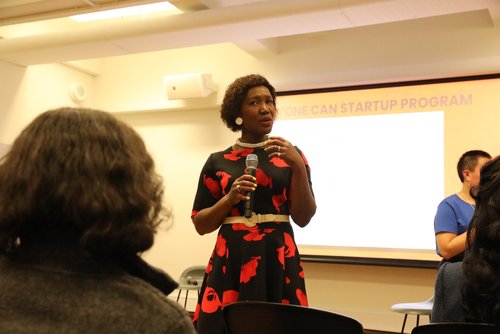How to foster positive business leadership for any business

Workplace Inclusion when cultivated right is a sure way to foster positive culture, and team cohesion. People’s differences are valued and supported, and barriers are removed that would prevent any person from reaching their full potential in the workplace.
True inclusion celebrates all factors of diversity in talents, age, abilities, genders, sexualities, or religious belief. It enables every employee to perform at their best in a safe, supportive environment.
It is well established that Inclusive culture at work promotes a sense of belonging amongst staff. Happy workers increase productivity which benefits the business.
“A lot has been written that suggests workers care more for company culture than salary”
Workplace Inclusion is not simply a nice thing to do, but an expectation from employees who want to work in an environment that is safe and respectable.
How do you create an Inclusive work culture?
In a modern-day business, it’s not enough to simply hire people of different nationalities, genders, races, and sexual orientations. Businesses must make the effort to help the people they have invested in hiring feel welcome, safe, and free to be themselves in the workplace.
Here are five (5) simple stepsyou can take as a business leader to promote an Inclusive company culture that is positive for your business, your people and your bottom-line.
Proceed with the understanding that communication and involvement matter most when promoting workplace Inclusion.
- Start from the top.
As with creating and encouraging a sense of belonging in your workplace, it must begin with leadership. The company’s team at the top need to have the desire to build a diverse culture and hire people who are open to working with people of all different nationalities, age, abilities, skin colours, genders, and sexual orientations.
“If diversity is not a company goal … it just won’t happen”.
A healthy business begins with a healthy company culture that is welcoming and demonstrated by leaders.
It must be the goal of organisation, to strive to provide your employees with the right tools and skills necessary to do their best. If you have invested in hiring them, then you must be willing to support them so they can be able to thrive and succeed. Anything less will be letting them down and it also starts with accepting them for who they are but also willing to support their growth.
- Communicate Goals and Measure Progress
Establish and clearly communicate specific, measurable, and time-bound goals as you would with any other strategic aim. Because what we benchmark as an organisation, we are more likely to invest in, work towards to achieve the outcome we want and, in this case, it is the culture of Inclusion.
For example, we may decide to achieve racial and gender equity in our hiring process in 3 years; we will increase racial and gender representation on executive team by 50% in 3 years; audit for and achieve equity in salary and promotions in 2 years.
It is highly recommended that the following actions be taken when cultivating workplace Inclusion: a full audit of your people processes—from recruiting and hiring to developing and retaining employees. Couple the data with engagement and other workforce survey data to gain a full measure of what your company is currently and where you want to go, with your goals.
For example:
- Identify any shortcomings and measurable discrepancies around inclusiveness in your organization.
- Instil rigor into inclusion strategies with data-driven plans and measure the results.
- Establish a clear business case for how the company will benefit by having a more inclusive culture by asking:
- What are our inclusion goals?
- What are the reasons for those goals?
- How do we quantify inclusion?
- How will inclusion impact our mission, brand, or bottom line?
- Focus on Inclusive recruitment strategies.
Once your company’s leadership sets the tone, it’s critical to extend that attitude throughout the organization in communication and actions.
When you communicate your intentions throughout your organisation, it allows you get support and buy-in creating a culture of belonging that is fostered peer-to-peer, bottom-up and top-down in the entire organisation.
It is recommended to take a close look at your company’s recruiting processes, from how jobs are advertised to who sits on the interview panel to ensuring your hire is imbued with practices that facilitates diversity and Inclusion culture.
This will ensure, from the start you are intentional about diversity and Inclusion as an integral part of your organisation’s present and future workforce.
- Provide safe spaces for employees.
Research tells us, Inclusion is the first step in achieving psychological safety. So, cultivating Inclusive workplaces is considering the very safety and comfortability of all employees.
These days, company offering unisex bathrooms in your office is said to be progressive and inclusion for employees with various sexual orientations.
Spending time with one another and providing employee networks can be safe and spark open communications.
Safe guide your brand. Providing a safe spaces for your employees also means if they have any issues, they are more likely to come to you than going outside to places like the social media, to voice their frustrations about your company.
- Give employees multiple ways to provide feedback.
This may sound like a cliché but give employees an outlet for connecting with others and sharing their stories and really get to know your people and what they have to offer. It may surprise you as a company, the talent, skill, and the people capacity you may have right under your noses.
When you do those employee surveys, work to drill down on engagement and Inclusion issues. Conduct a comprehensive assessment of your organization’s demographics and people processes to develop specific strategies to promote inclusiveness
So that whatever medium you are using, be it employee survey, company all-hands discussions or campaigns, giving your employees multiple ways to share their feedback, their perspective and their stories will create an open dialogue and true connections that can lead to more positive outcomes.
An inclusive culture is a work in progress and must constantly be revisiting your policies and programs to create a more agile and diverse environments.
There is always something that can be improved upon, the key is to make it your company’s priority to take action to close any gaps so that all employees feel like they belong and are supported to thrive.
At the end of the day, it is about the culture you want as a company, and how you can create it in ways that is authentic to your brand at the same time, meeting the needs of your employees.
And we know businesses, that invest in creating a diverse and inclusive workplace will reap the benefit of a positive culture and a healthy bottom line too.
This quote is on point “your employees know that life is not fair, but they do expect their boss to be fair”.
HAVE YOUR SAY:
How does your business foster positive leadership?
Post a comment on First 5000 – Have your Say on LinkedIn today or email editor@first5000.com.au with your story.
Gloria Tabi is an Author and the Managing Director at EVERYDAY INCLUSION. Gloria’s research specialises in Social Analysis on Race, Social Inequalities and Anti-Racism. As a Black African-Australian woman, Gloria brings well-grounded knowledge and experience of the impacts presented in race and gender identities. With over thirty-years of experiences in Project Management, Employment Services, Professional Mentorship and Business Coaching Gloria’s ability to engage, negotiate and build worthwhile relationships across diversity, clients and demographics are her greatest skills. Gloria provides proactive, relevant and impactful training frameworks that are tailored to your business for a safe, productive and sustainable future.








